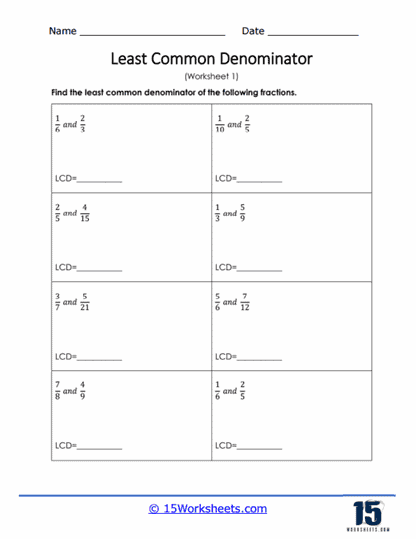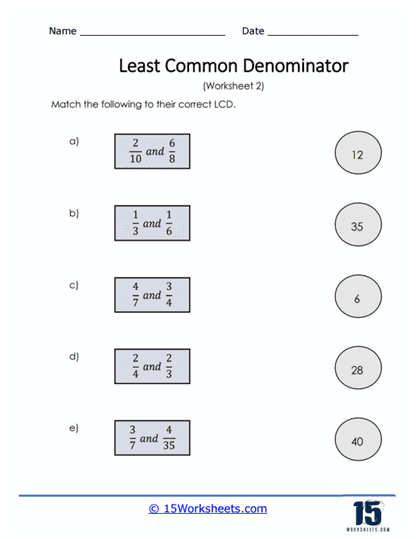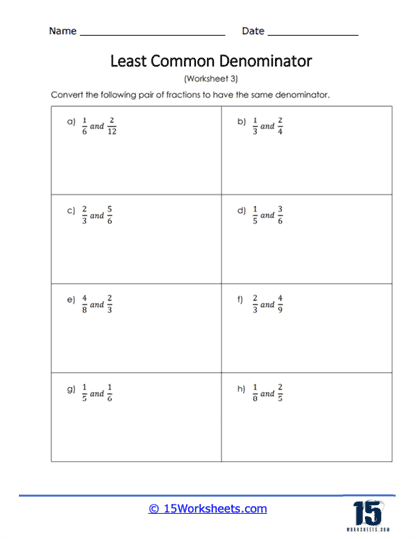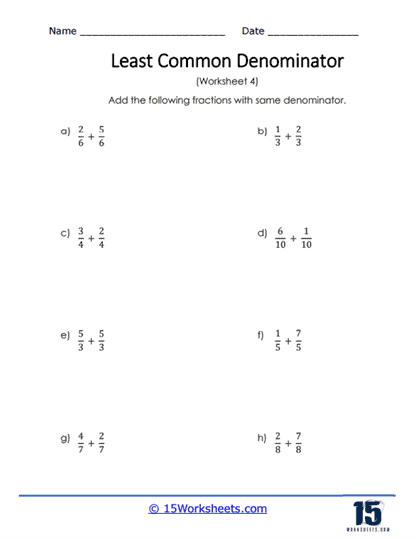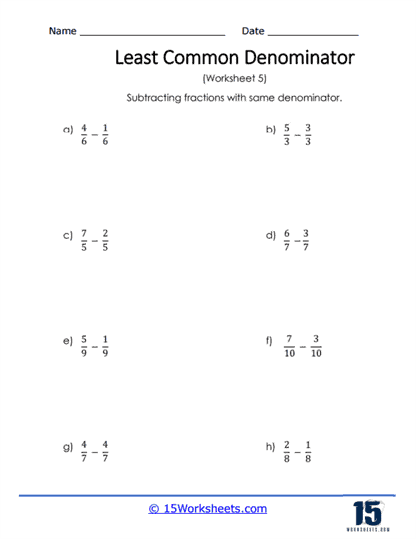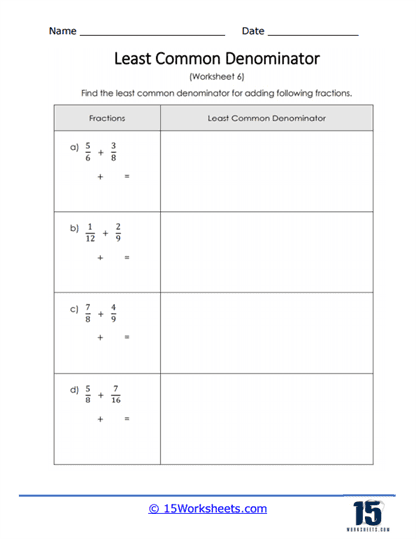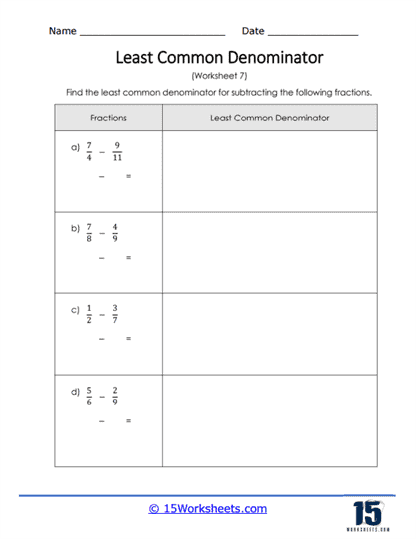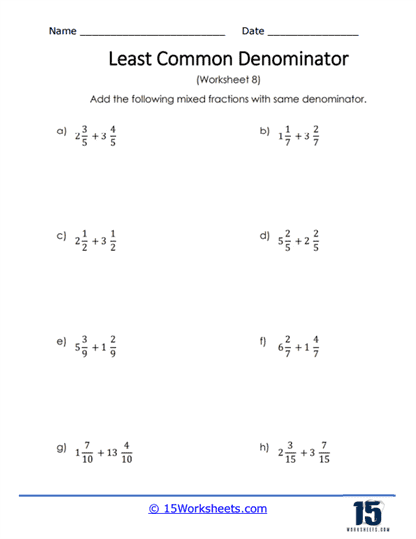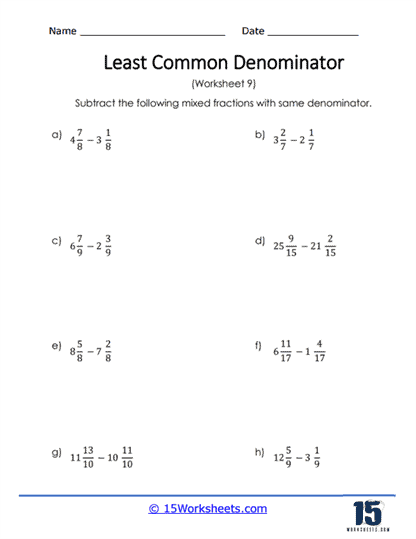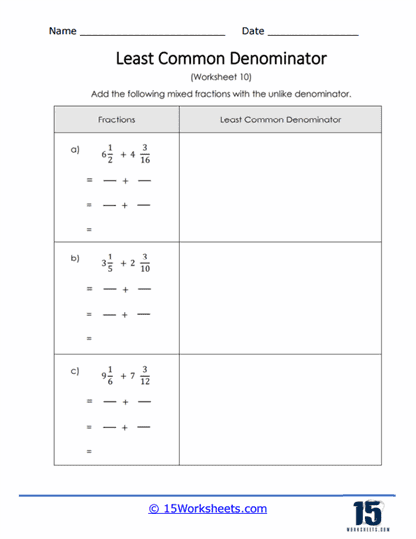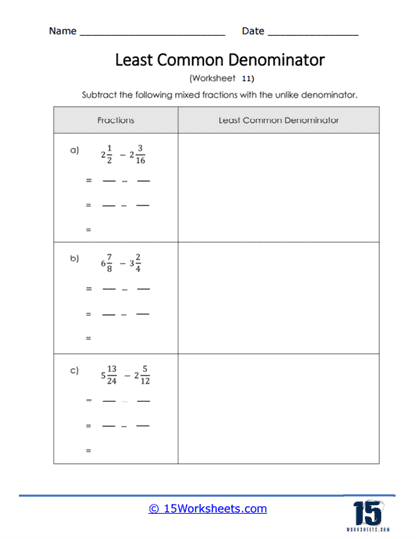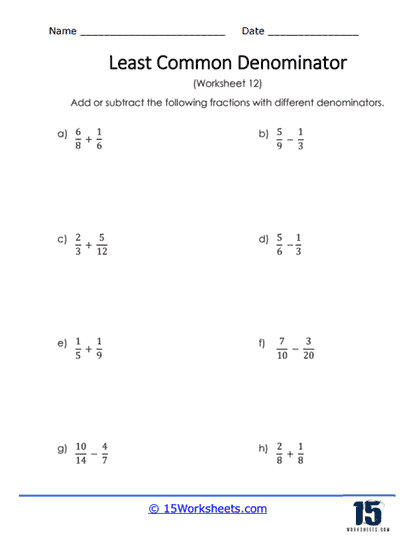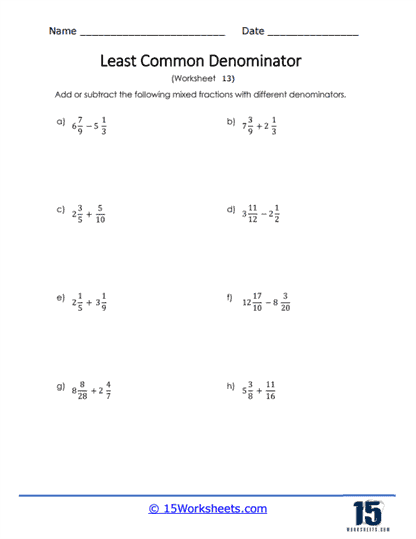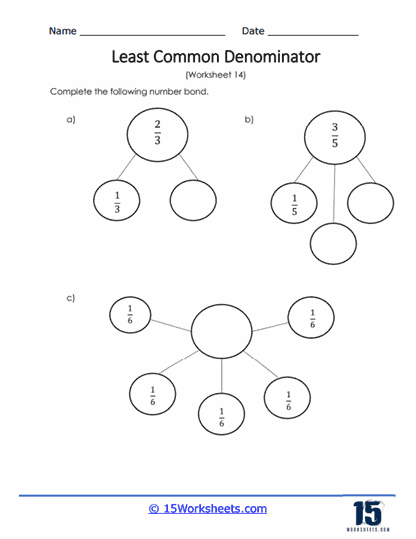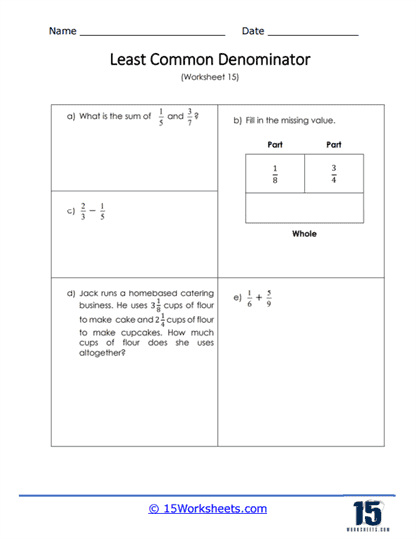Least Common Denominator Worksheets
All About These 15 Worksheets
This series of worksheets on the least common denominator is a comprehensive and effective set of materials designed to help students master this essential math concept. The least common denominator (LCD) is the smallest common multiple of two or more denominators, and it’s necessary for adding and subtracting fractions with different denominators.
The worksheets are organized into several different sections, each of which focuses on a specific aspect of the least common denominator. These sections include identifying common denominators, finding the LCD of two or more fractions, and adding and subtracting fractions with unlike denominators.
The exercises are designed to be both challenging and engaging, with a variety of problems ranging from basic to advanced difficulty. This series includes word problems along with simpler numerical problems, providing students with opportunities to apply their skills in real-world contexts. The worksheets are suitable for use in a classroom setting or as homework, and they can be easily customized to meet the needs of individual students.
Overall, these worksheets on the least common denominator are an excellent resource for learners of all ages and skill levels. With clear instructions, engaging problems, and ample practice opportunities, these materials are sure to help students master this critical math concept and build a strong foundation for future learning.
What is the Least Common Denominator?
The Least Common Denominator is the smallest number that is a multiple of two or more denominators. It is mainly used when you need to add or subtract fractions with different denominators. Having a common denominator makes it possible to perform these operations because it ensures that the fractions are comparing equal parts.
Here’s a step-by-step guide to finding the LCD of two numbers:
- List the multiples of each denominator.
- Identify the smallest multiple that the denominators share.
Let’s work through an example. Suppose you want to add the fractions 1/4 and 2/6. The denominators are 4 and 6.
Step 1: List the multiples of each denominator.
- Multiples of 4: 4, 8, 12, 16, …
- Multiples of 6: 6, 12, 18, 24, …
Step 2: Identify the smallest multiple that the denominators share.
In this case, the smallest shared multiple is 12. So, the LCD of 4 and 6 is 12.
Now that we have the LCD, we can rewrite the fractions with a common denominator and perform the addition:
1/4 + 2/6 = (1 x 3)/(4 x 3) + (2 x 2)/(6 x 2) = 3/12 + 4/12 = (3 + 4)/12 = 7/12
So, the sum of 1/4 and 2/6 is 7/12.

